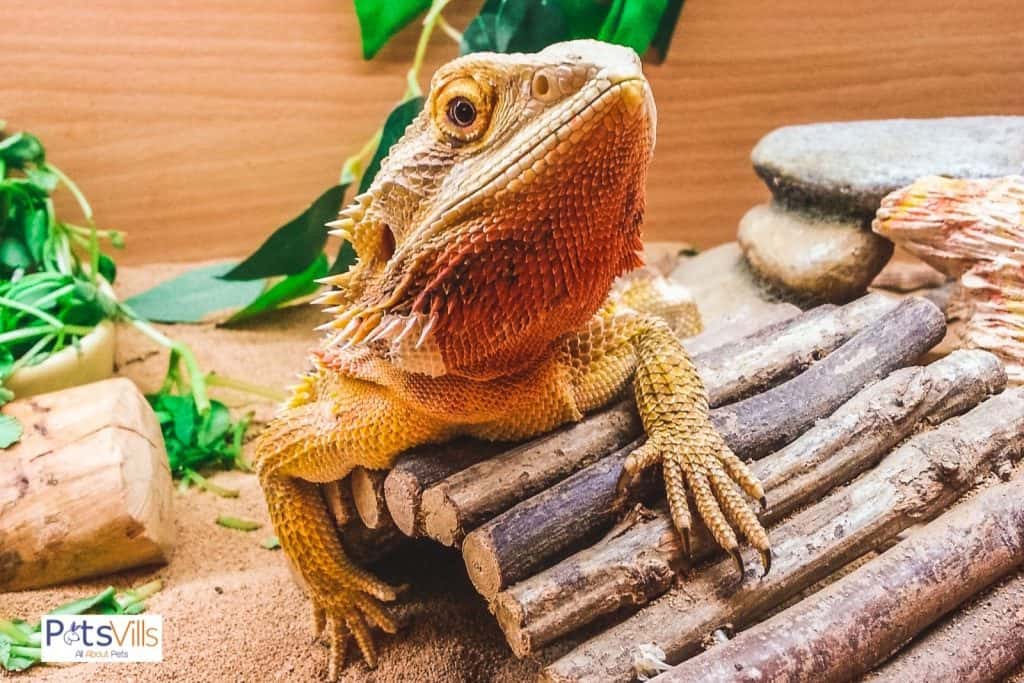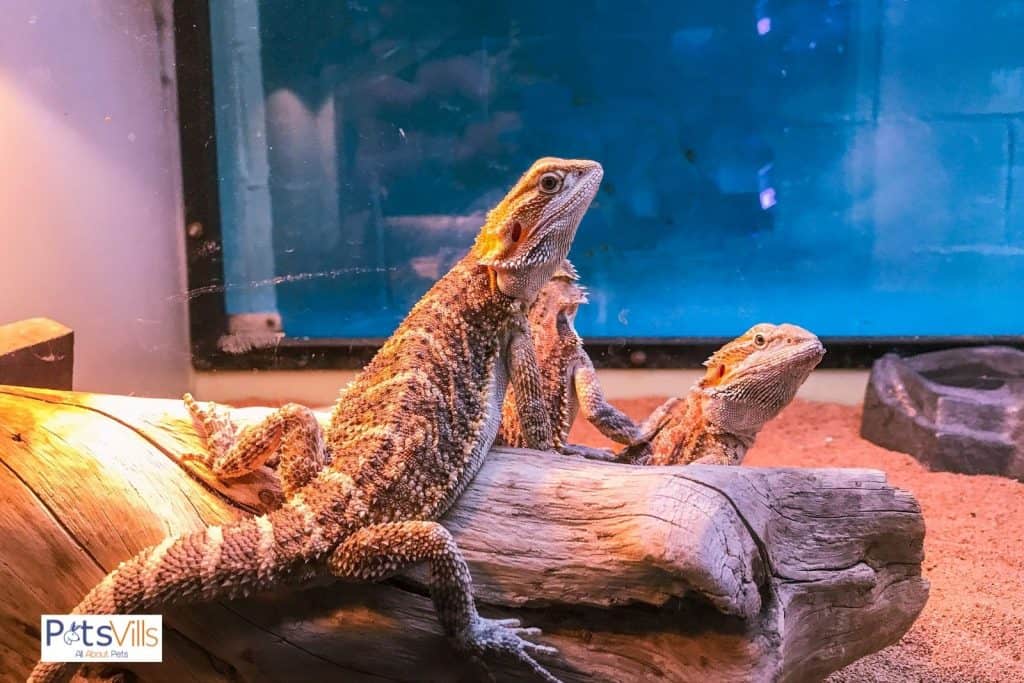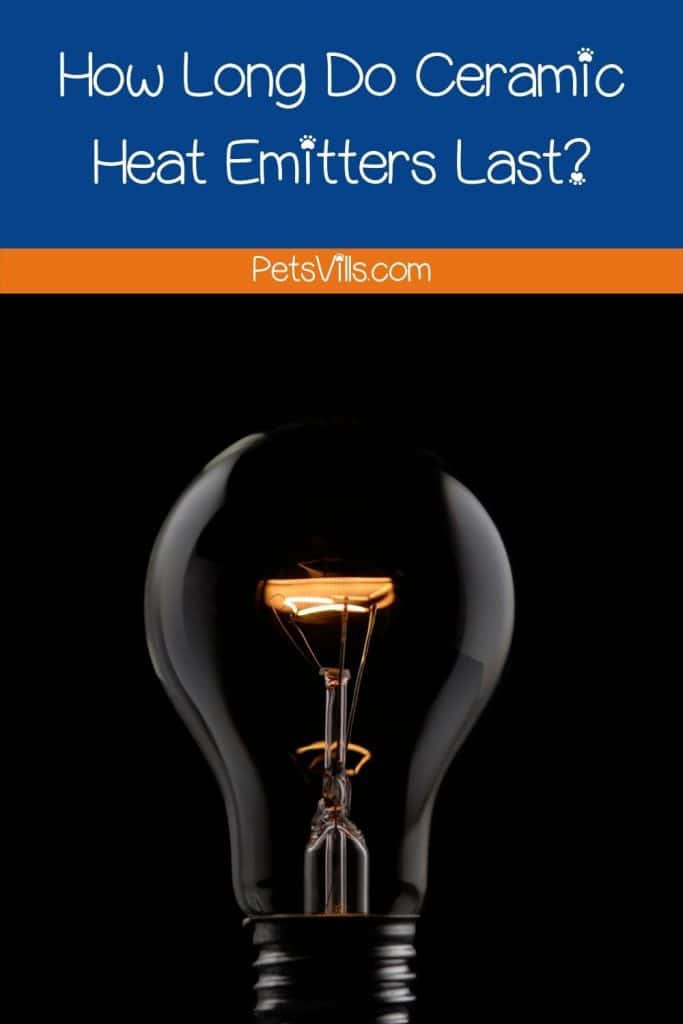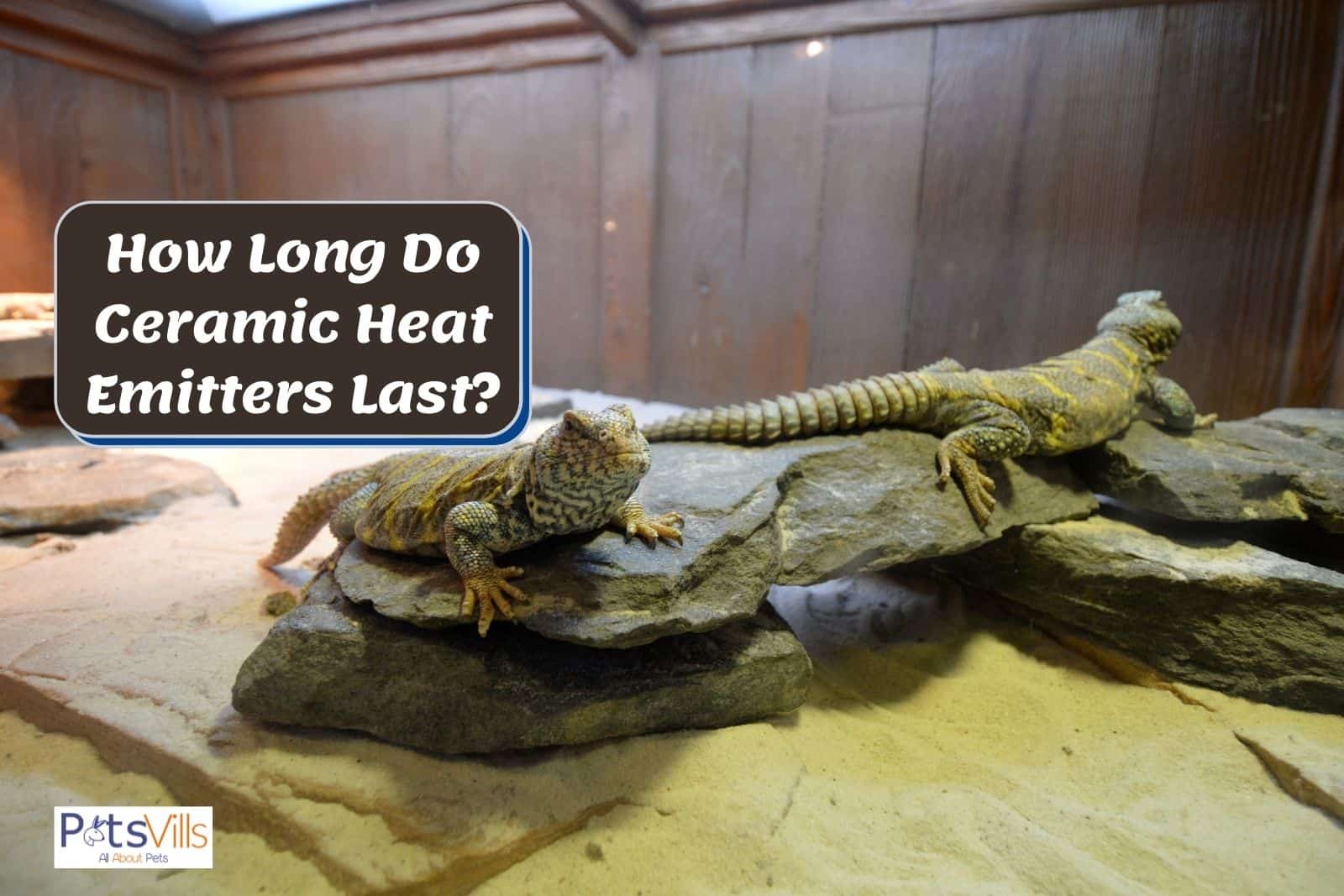I get this question a lot, especially from bearded dragon owners who have little to no knowledge of the light source of their beardies.
I was once a beginner like you, and I know the feeling of not giving everything to your pet reptiles.
That’s why I crafted this very guide to help you in your dilemma!
READ MORE: Are Ceramic Heat Lamps Safe?
Table of Contents
Why Use a Ceramic Heat Emitter?
Ceramic heat emitters, more commonly referred to as ceramic heaters, raise the environmental temperature range of a bearded dragon tank.
Here’s a video discussing why you need to use a ceramic light bulb as your direct heat source:
I found them to be strange-looking devices at first, but as it turned out, they’re significant.
The primary purpose of using an electric heater is to aid our bearded dragons when it needs to increase their body temperature to maintain their immune systems.
Just like the temperature they get in their natural environment, you need to supply your dragon with warm surface temperatures using a relevant source of light.
How Long Do Ceramic Heat Emitters Last?
Typically, these ceramic space heaters last for two (2) to three (3) years. Excellent-quality and robust heat lamps are different – they last for about five (5) to six (6) years.
It lasted for about a year and a half when I had mine, which was already too long because I purchased a used or a secondhand tank.
Understanding the longevity and lifespan of these ceramic space heaters is relevant. It will let you know when the best time is to replace it or if it only needs repairs.
How Long Can You Leave a Ceramic Heat Lamp On?
Most ceramic bulbs are designed to work as a perfect 24-hour heat source. Some are ideal for just 8 to 12 hours, and so on.
This will depend on a few things, which include:
What the Climate or Temperature Is
If your house has cold temperatures, you want your ceramic heat emitter to be turned on most of the time.
You want to aim for heating terrariums so that the air temperature within it wouldn’t be too cold for your beardie, allowing them to stay at the top of their health.
NOTE: For cold-blooded reptiles, having them at the right temperature is an excellent factor for their health. [1] Animal health should be at the top of your priority.
How Warm Your Beardie Wants Its Surroundings to Be

The recommended temperature for bearded dragons, as per experts, should be within 24 to 29 °C during the daytime and about 22 to 25 °C at night.
But not all beardies have the exact wants and needs for their ambient air temperature. Some yearn for a warmer or hotter temperature, while others are satisfied with what’s expected.
Mine is pretty typical, so I can’t complain!
Feel what your bearded wants and adjust the amounts of UVB light according to their needs. Observe them when they’re basking.
EXPERT TIP: When your beardie is gaping (when it’s opening its mouth), it usually means that the temperature isn’t hot or warm enough.
The Type of Lamp or Bulb Used
Last but not least is to consider the type of lamp or bulb your ceramic heat emitter. Not all of these are made from ceramic so you know.
Some of these heaters utilize infrared heat, regular light bulbs, highly modified ceramic light bulbs, which are better for extended periods.
Try to figure out the bulb you’re using because this will dictate whether or not it’s fine for your ceramic heat emitter to be turned on for longer hours.
NOTE: You’ll be able to know this by checking the package or the box of the ceramic heater.
Here’s a great video comparison to watch:
How Do You Choose a Ceramic Heat Emitter?
In choosing a bearded dragon ceramic heater, you must know every bit of information about it before purchasing.
Personally, it can be pretty frustrating because most of them have the exact specifications. So, I crafted this part of the guide to help you purchase your ceramic heater.
Know and Understand the Material
Not just because they’re labeled as ceramic heat emitters mean that they’re made from the same kinds of ceramic.
There are various types of ceramics in the market, and almost all of them are exhausted to be components of ceramic heat emitters.
There are Zirconia Ceramics, Silicon Nitride Ceramics, Alumina Ceramics, and many more types of ceramics. [2]
So, try to understand the ceramic used for a particular product; it’s one thing that makes heat emitters expensive.
Check the Degrees of Heat it Can Offer
You can’t just rely on the equipment’s material, and you also want to know the temperatures it can give off.
Some modern ceramic heat emitters are equipped with intense muscle-penetrating infrared heat, perfect for its purpose.
Most offer sunlike heat, so you shouldn’t worry about the heat they give off.
EXPERT TIP: Before purchasing, check the wattage of the space heater. This way, you’ll be able to find out the degrees of heat that it will be providing to your terrarium.
Consider the Gallon Enclosure Size

Last but most definitely not least is to think about the size of the cage. The best way to approach this is to know the gallon enclosure, the ceramic heat emitter, and where it will perfectly fit.
That is the first thing I look at with my knowledge now. I double-checked the cage size requirement to know if it could do the job.
You can go back to this guide anytime for the information you need regarding ceramic elements, ceramic heat bulbs, and many more!
If you require more information about ceramic heat emitters you can use for your pet reptiles, here are some of the most asked and thrown questions about it.
FAQs
Do Ceramic Heat Bulbs Burn Out?
Yes, they burn out just like all the other types of bulbs, too. You’ll notice them getting dimmer and dimmer even if you don’t see any sign that they’re impaired.
Do Ceramic Heat Emitters Smell?
Yes, but this does not mean that your space heater is faulty. Heating devices naturally emit odor because of the effect of heat on the material.
EXPERT TIP: You should only be concerned when you notice that your ceramic heater smells even if it’s not turned on.
How Hot Can a 25-Watt Ceramic Heat Emitter Get?
A 25-watt reptile heat lamp can produce up to 90 °F or about 32 °C. This is enough for small humidity terrariums that require higher-than-the-average temperatures.
In Conclusion,
With this guide, you can consider yourself an expert regarding the longevity and life expectancy of these ceramic heaters.
So, the next time you ask, how long do ceramic heat emitters last, go back to the things and points I listed, and you’ll be good to go.
Resources
- 1. Gardiner J. Bearded Dragon Care [Internet]. Animal Health Topics / School of Veterinary Medicine. 2019. Available from: https://healthtopics.vetmed.ucdavis.edu/health-topics/exotics/bearded-dragon-care
- 2. Different Types of Ceramics (Oxides, Non-Oxides and Composites) [Internet]. www.thomasnet.com. Available from: https://www.thomasnet.com/articles/custom-manufacturing-fabricating/types-of-ceramics/

How Long Do Ceramic Heat Emitters Last? Let us know your opinion on this topic below!
Barry Stingmore is a British content writer living in Fuerteventura, Spain. An animal lover at heart, he shares his home with a dog and four rescue cats and has a passion for writing about animals big and small.
Barry loves finding answers to your animal-related questions, the more research involved the better! You can rely on him to find the facts.
Find him on FACEBOOK, TWITTER AND Linkedin
Read his latest ARTICLES.
Find more about him HERE.


